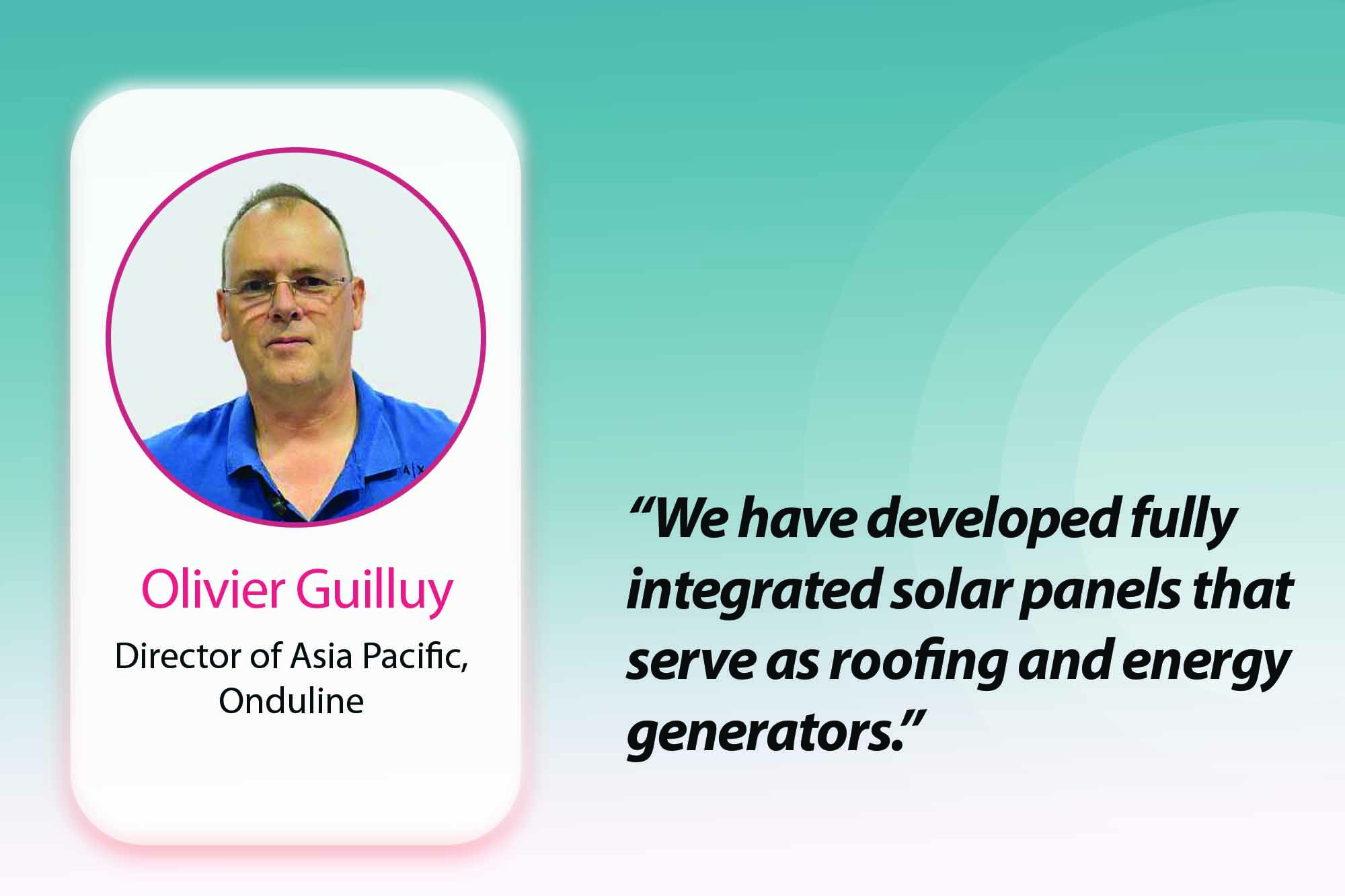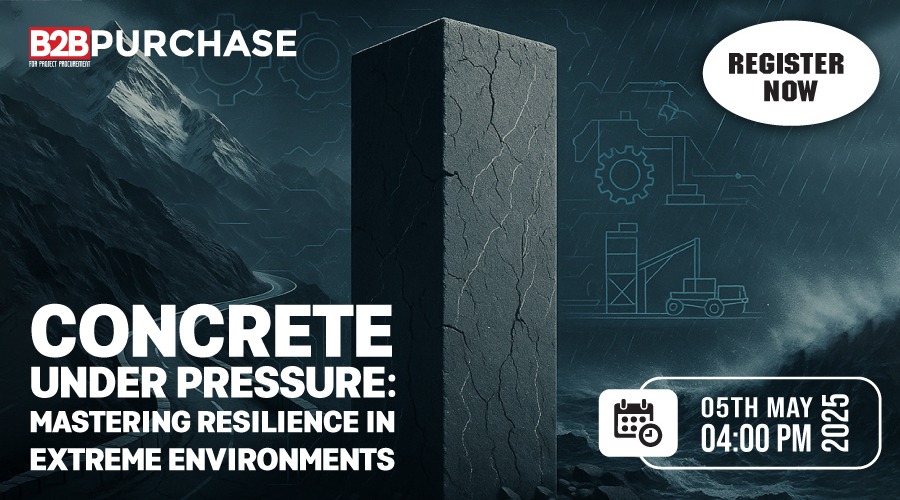Onduline has fully integrated solar roof tiles
By Edit Team | May 13, 2024 4:35 pm SHARE

In a quest for sustainability, we examine the environmental credentials of contemporary roofing solutions against traditional counterparts.
What’s new you see in India’s roofing market?
What struck me at the Roofing India Expo was the comprehensive range of roofing materials showcased. It’s rare to find such a diverse exhibition solely dedicated to roofing products comparable to those in China.
The roofing market in India is poised for growth, driven by the expanding middle class and the increasing trend towards innovative housing solutions. This growth trajectory is expected to continue in the coming years, albeit with shifts in product preferences.
How do you see the adoption of decorative roofing solutions among the upper-middle and upper classes in India?
There is a growing interest in products offering good thermal performance, as evidenced by the exhibitors showcasing thermal insulation and enhanced products at the expo. Our solutions excel in temperature preservation, aligning well with the demand for energy-efficient options. We also foresee a rising trend in solar technology integration, offering aesthetics and functionality.
Could you elaborate on how you’re incorporating solar technology into roofing?
We have developed fully integrated solar roof tiles and energy generators. This eliminates the need for separate solar panel installations on roofs, achieving what companies like Tesla aimed for but couldn’t accomplish. It’s a blend of aesthetics and practicality.
How eco-friendly are your roofing products compared to traditional alternatives?
Our products have a favourable environmental footprint compared to alternatives like traditional roofing materials or electric cooling systems. While simpler materials may be cheaper upfront, there is a growing market for aesthetically pleasing, high-performance solutions that offer both sustainability and efficiency.
How has the logistics and supply chain management improvement impacted your company’s operations and expansion plans, particularly concerning market development and sales volume?
Due to streamlined regulations and infrastructure enhancements, logistics and supply chain management have significantly improved over the years. We have a presence in Bangalore, and moving goods between states has become much smoother and cost-effective.
It’s more about market development and sales volume. Based on market demand, we are currently building a factory in Indonesia. Similarly, if we see significant growth in sales in India, setting up a facility here becomes a viable option, considering the country’s potential as a market for the next decade or more.
How do you expand awareness of your products, especially among architects?
We are expanding our presence by recruiting more sales personnel to cover a wider geographic area. Additionally, nurturing distributor networks and investing in marketing efforts are crucial for reaching architects and other key stakeholders. While we’re primarily present in certain regions like Karnataka and Kerala, there’s immense potential to expand further across India.
What’s the lifespan of your roofing products, and how do you ensure their durability in India’s demanding climate conditions?
Our products come with a 15-year waterproofing guarantee, and we stand by that commitment. Proper installation by well-trained fabricators is essential for initial performance and long-term durability, especially in India’s demanding climate conditions.
You’ve been in the Indian market for quite some time now. What lessons have you learned?
Key lessons include adapting to local conditions and fostering a strong local team. Each market has its unique challenges and requirements, and it’s essential to customise our approach accordingly. Flexibility, agility, and simplicity are crucial in navigating the complexities of operating in diverse markets like India.
Cookie Consent
We use cookies to personalize your experience. By continuing to visit this website you agree to our Terms & Conditions, Privacy Policy and Cookie Policy.






































-20240213125207.png)

























